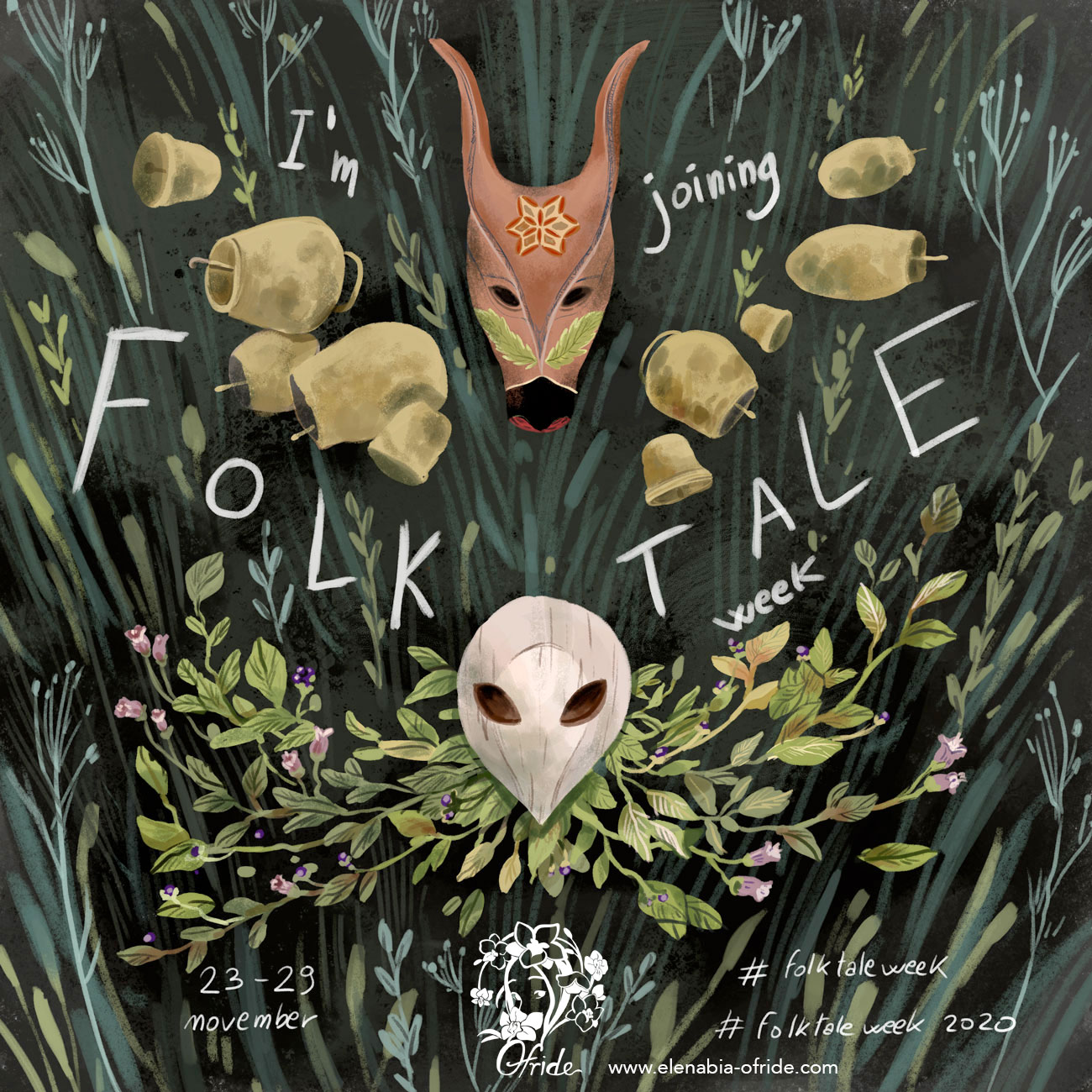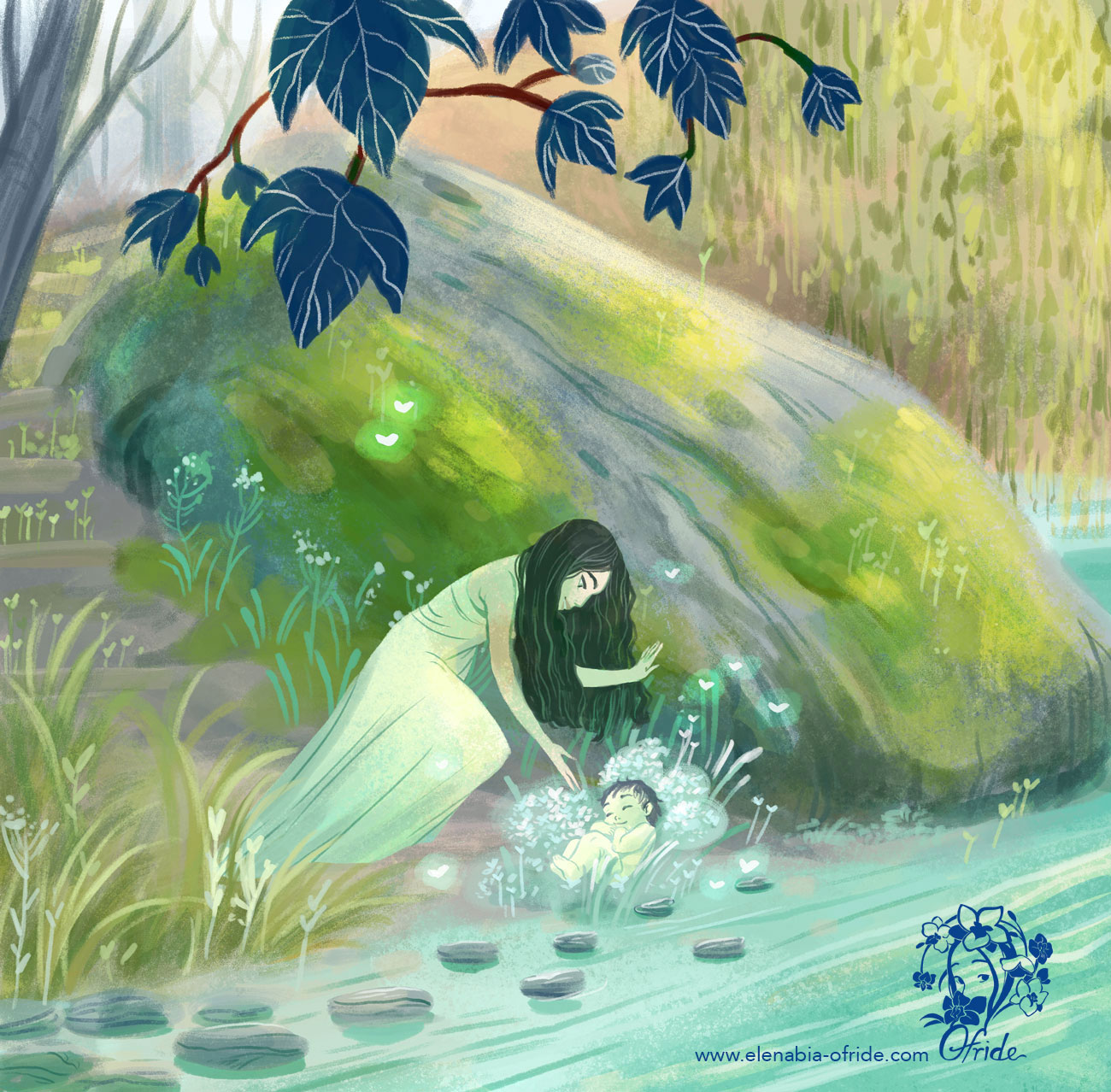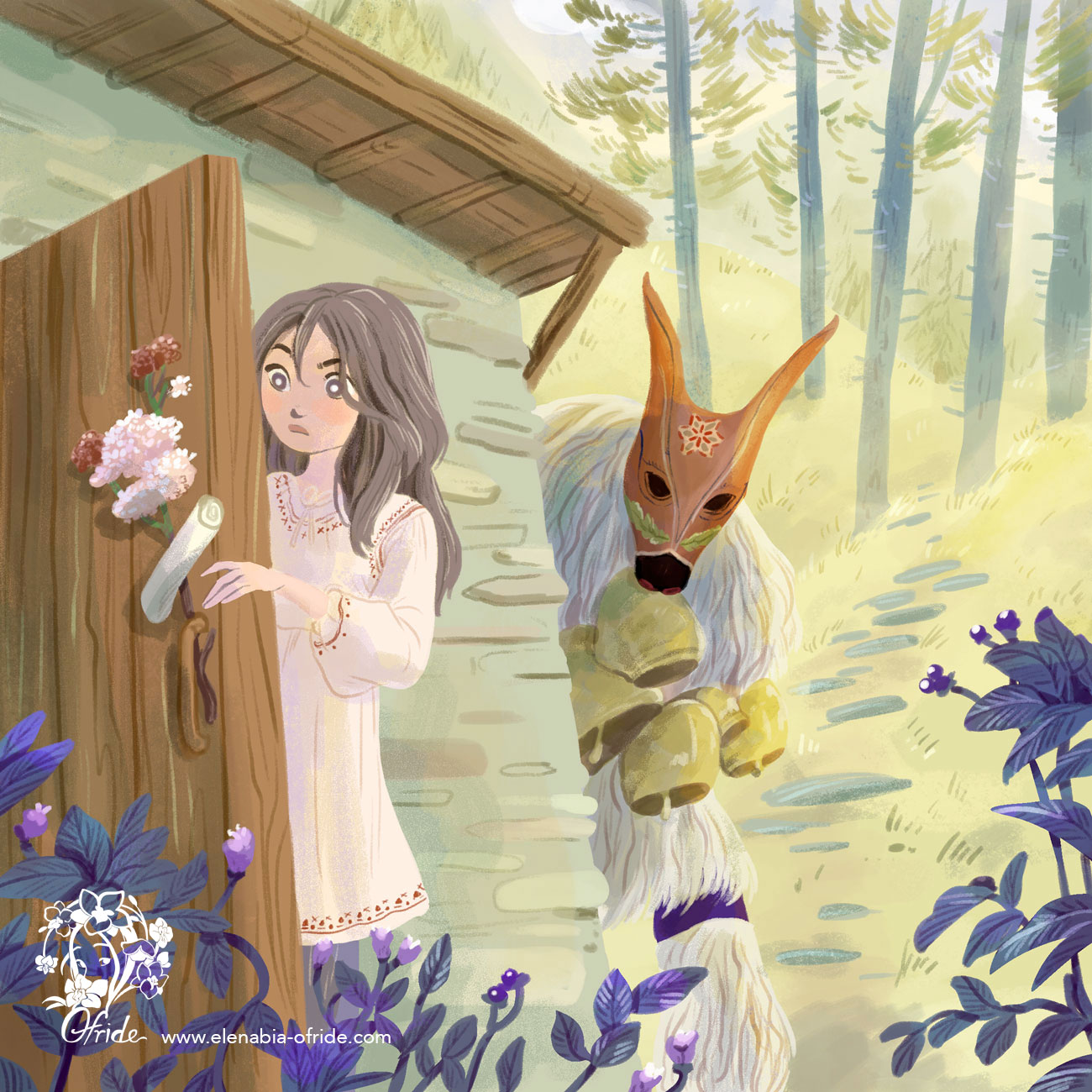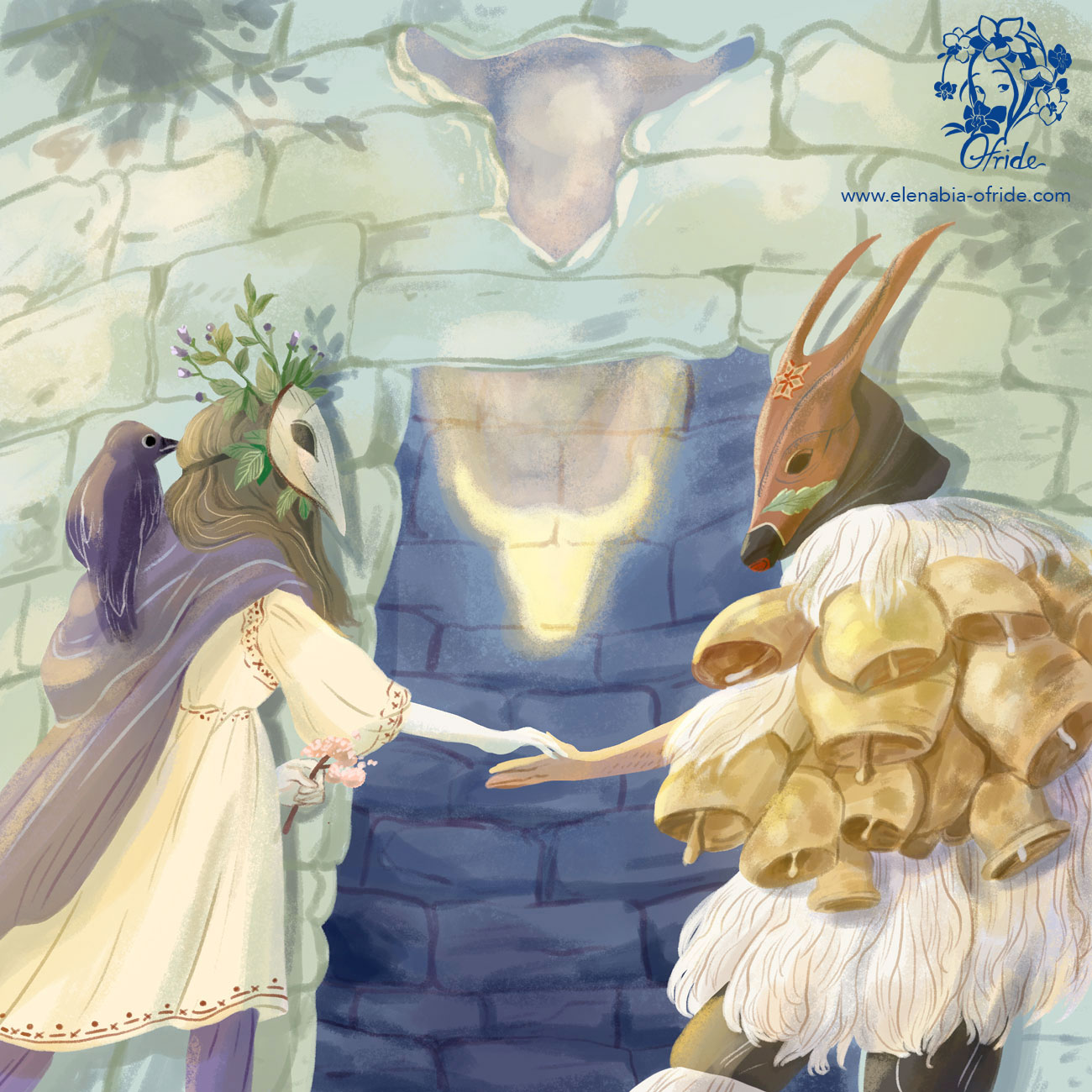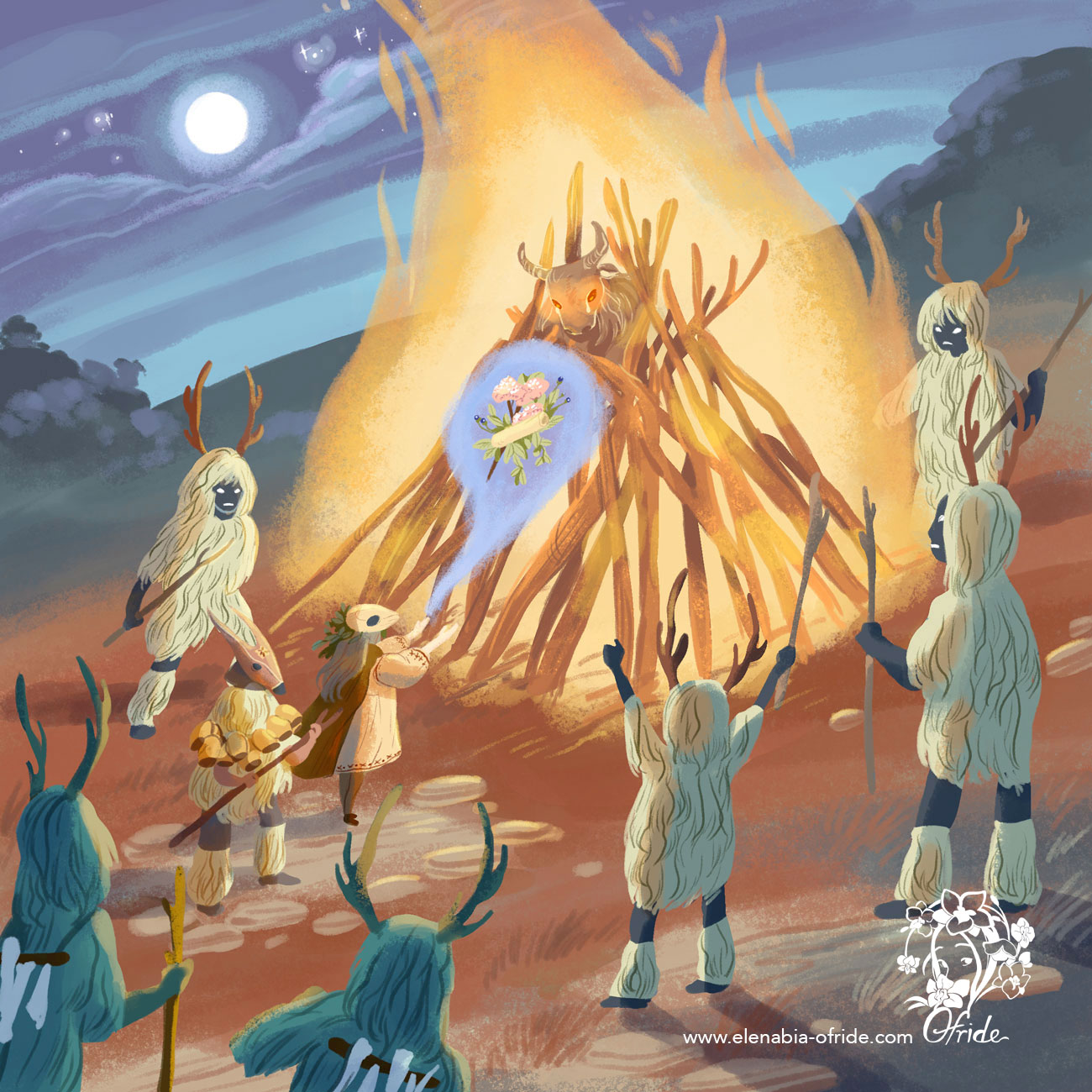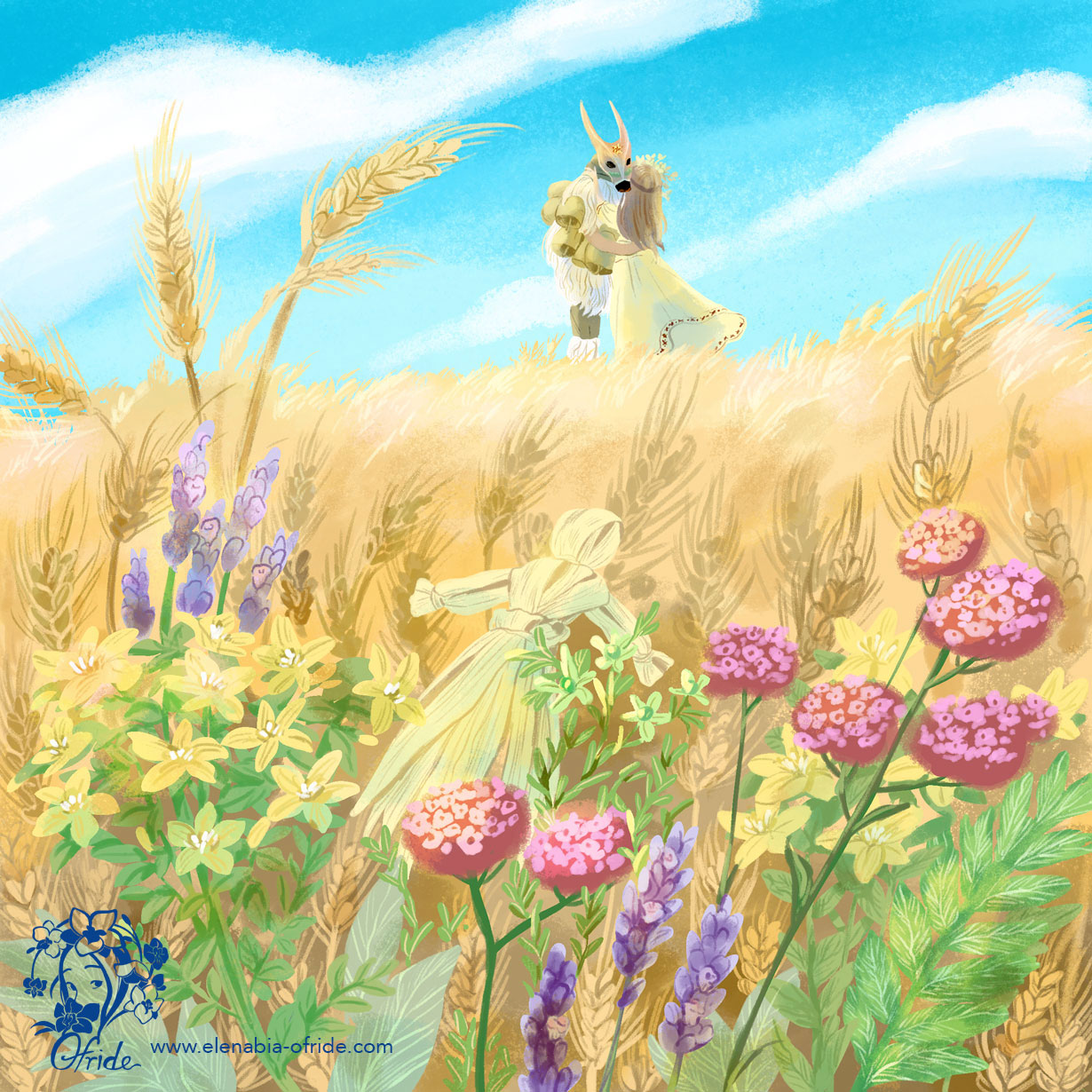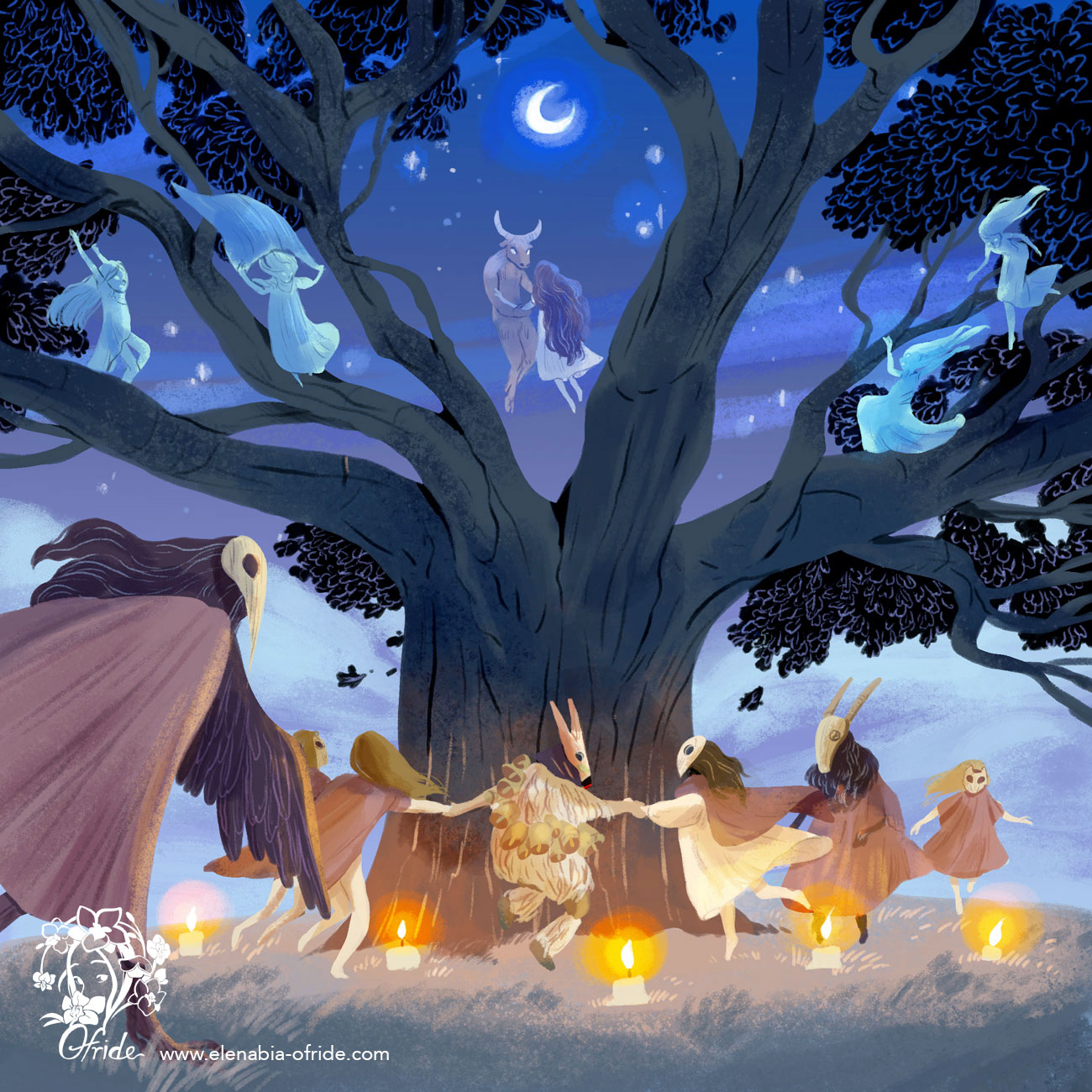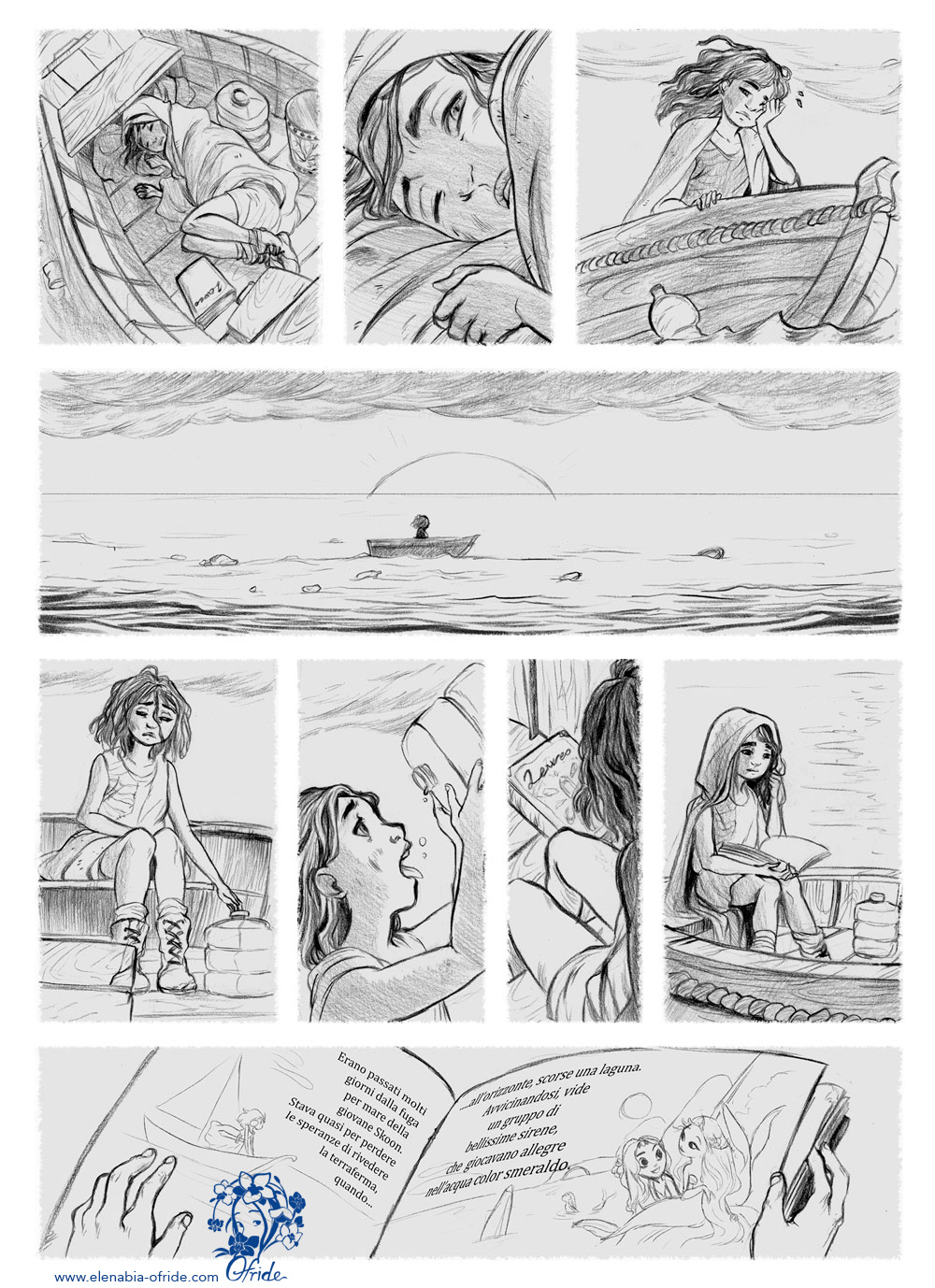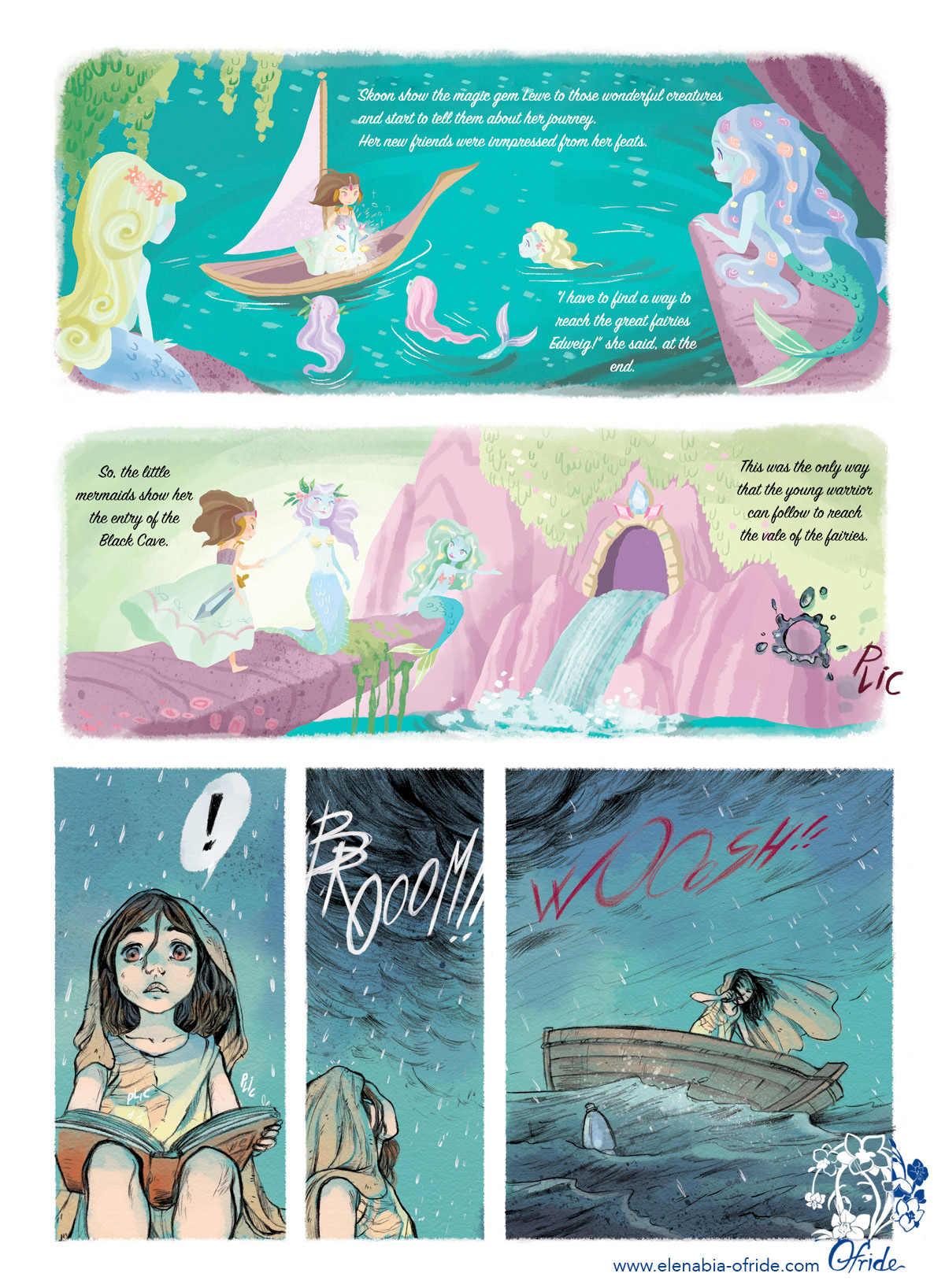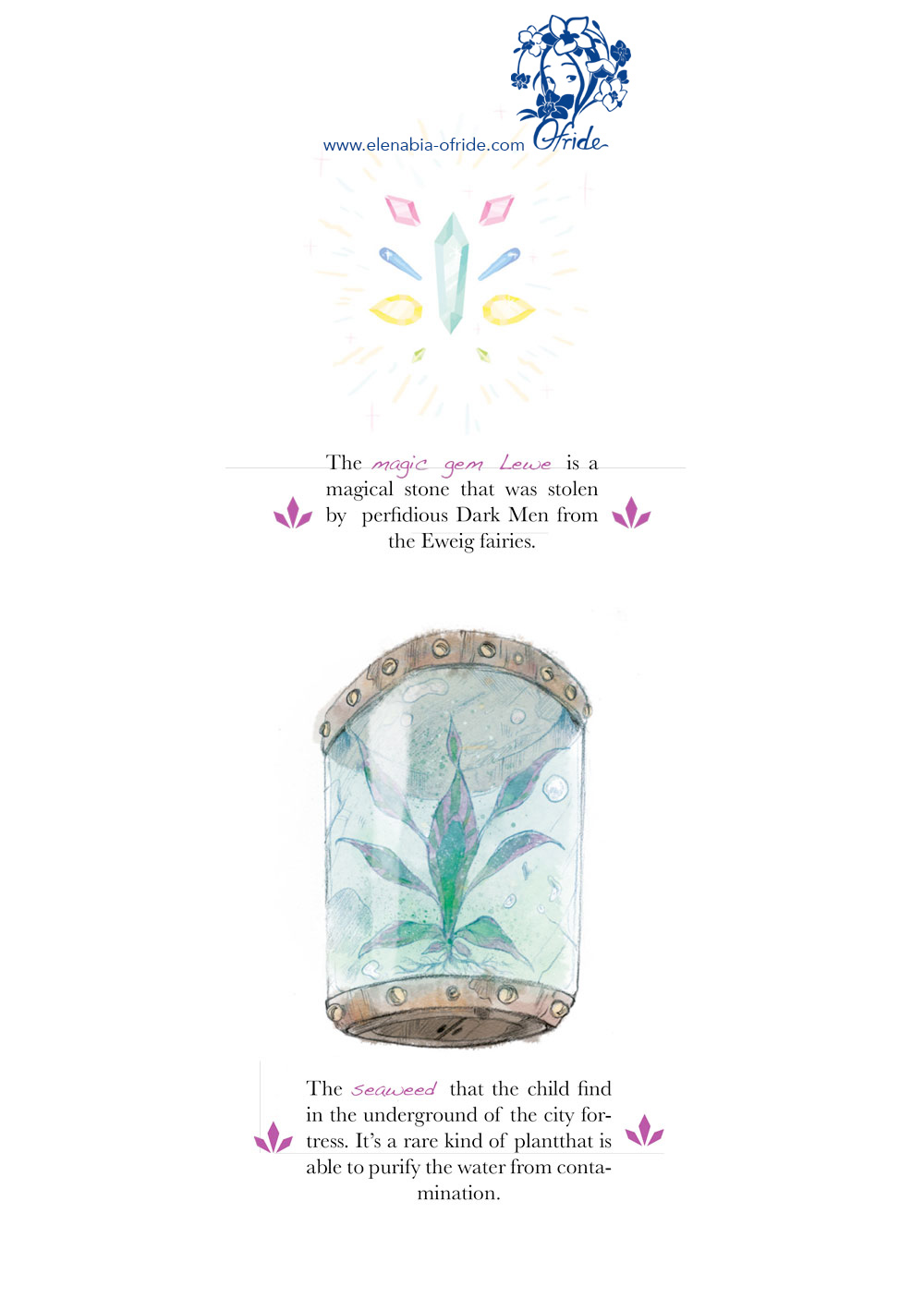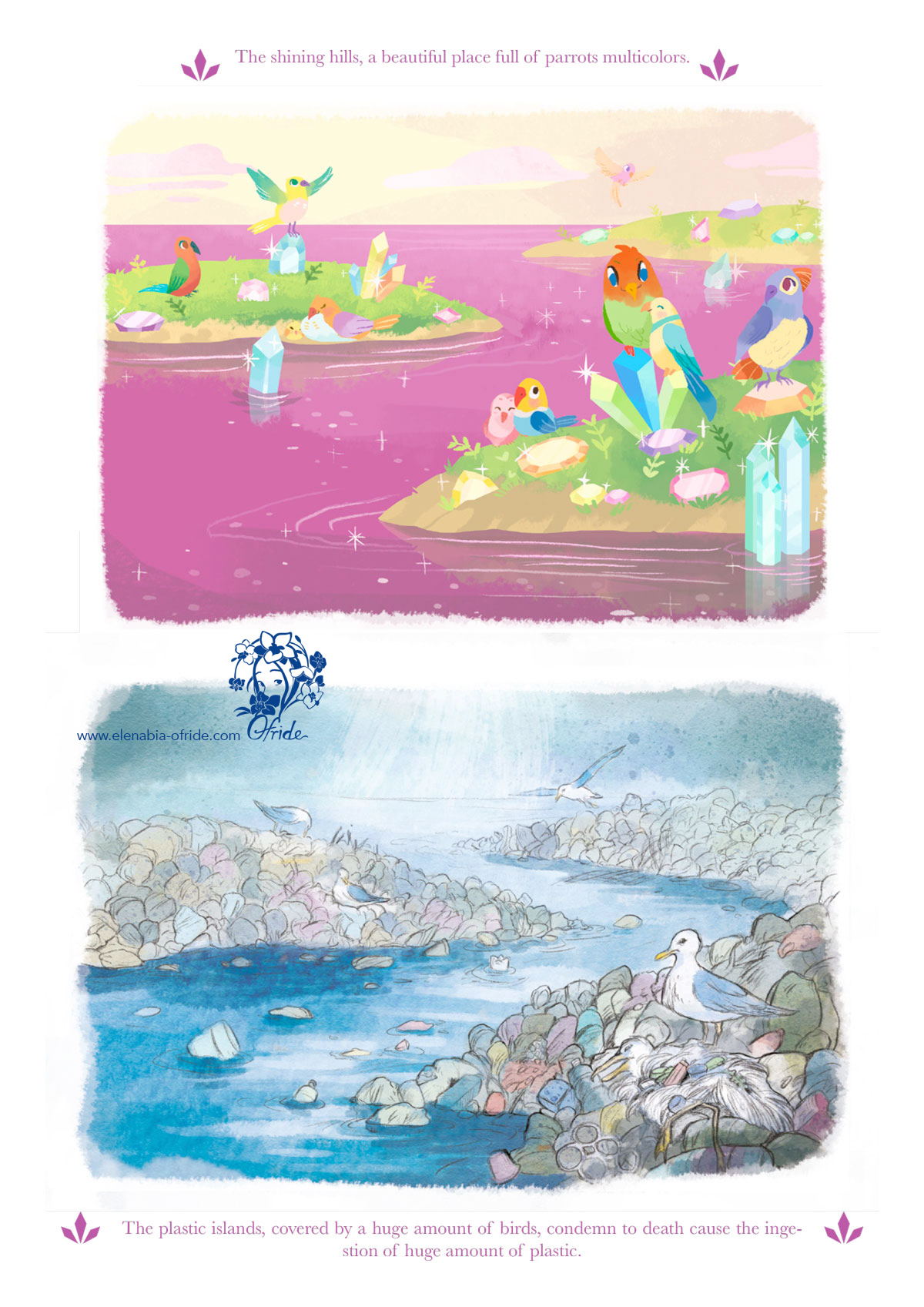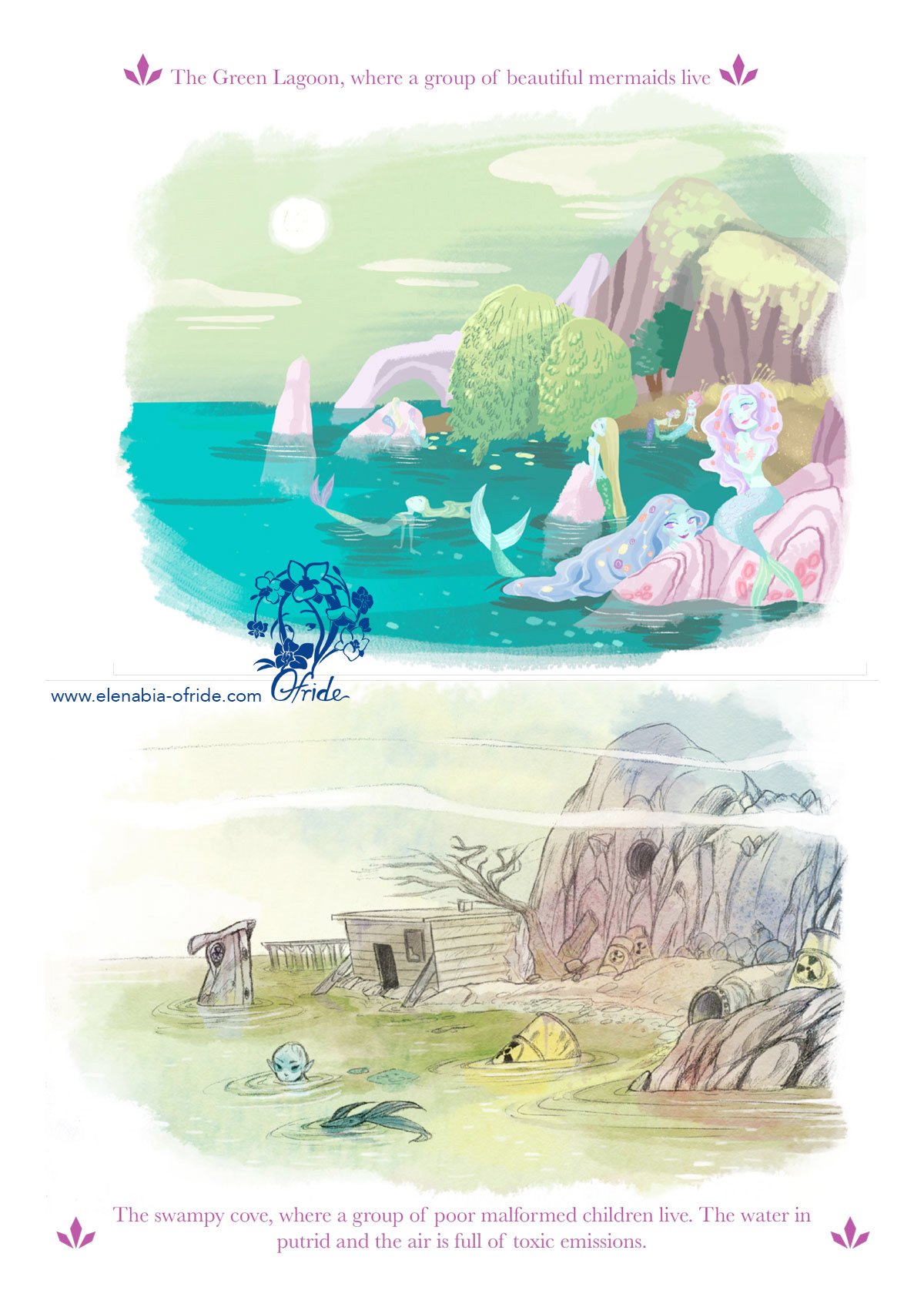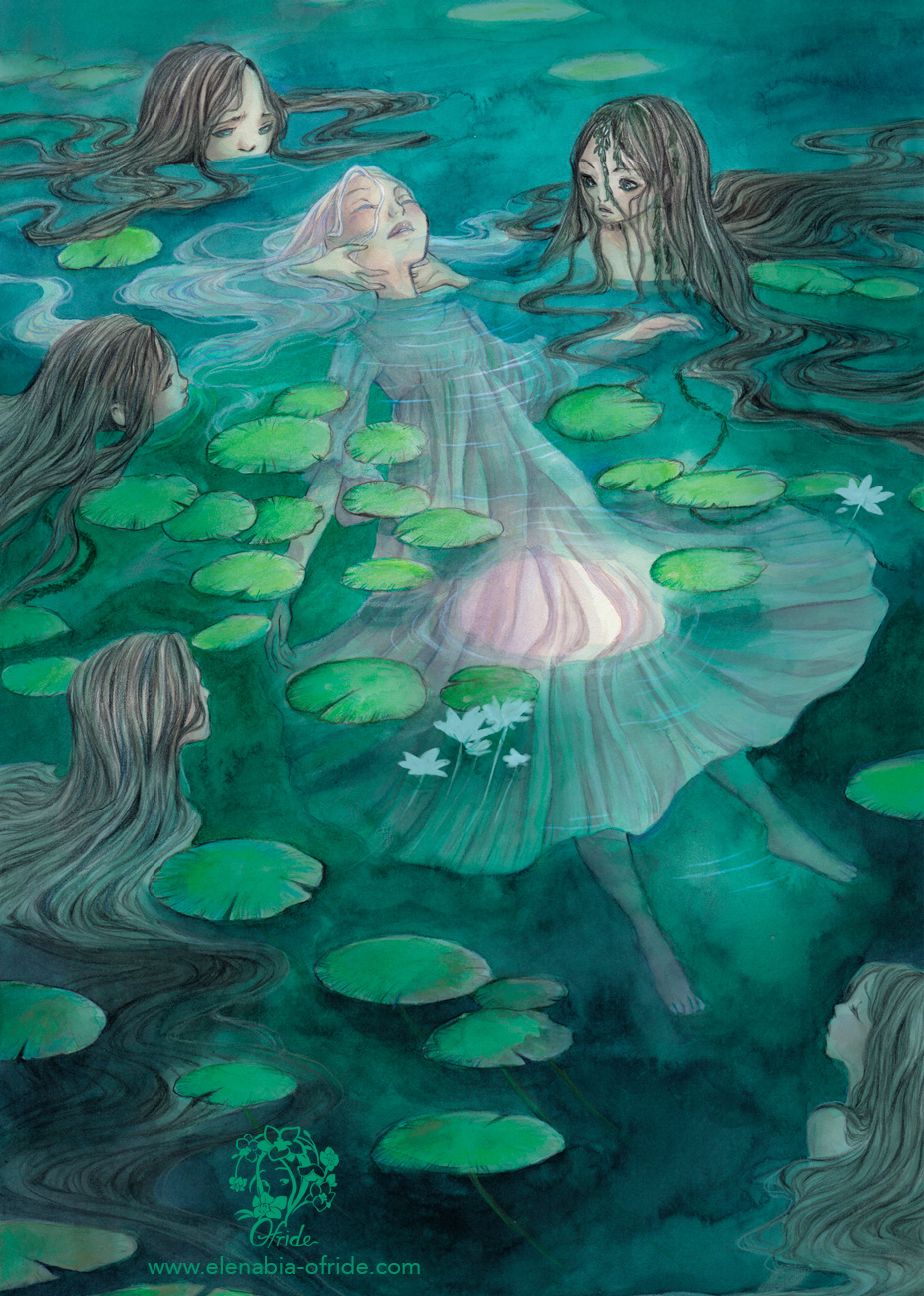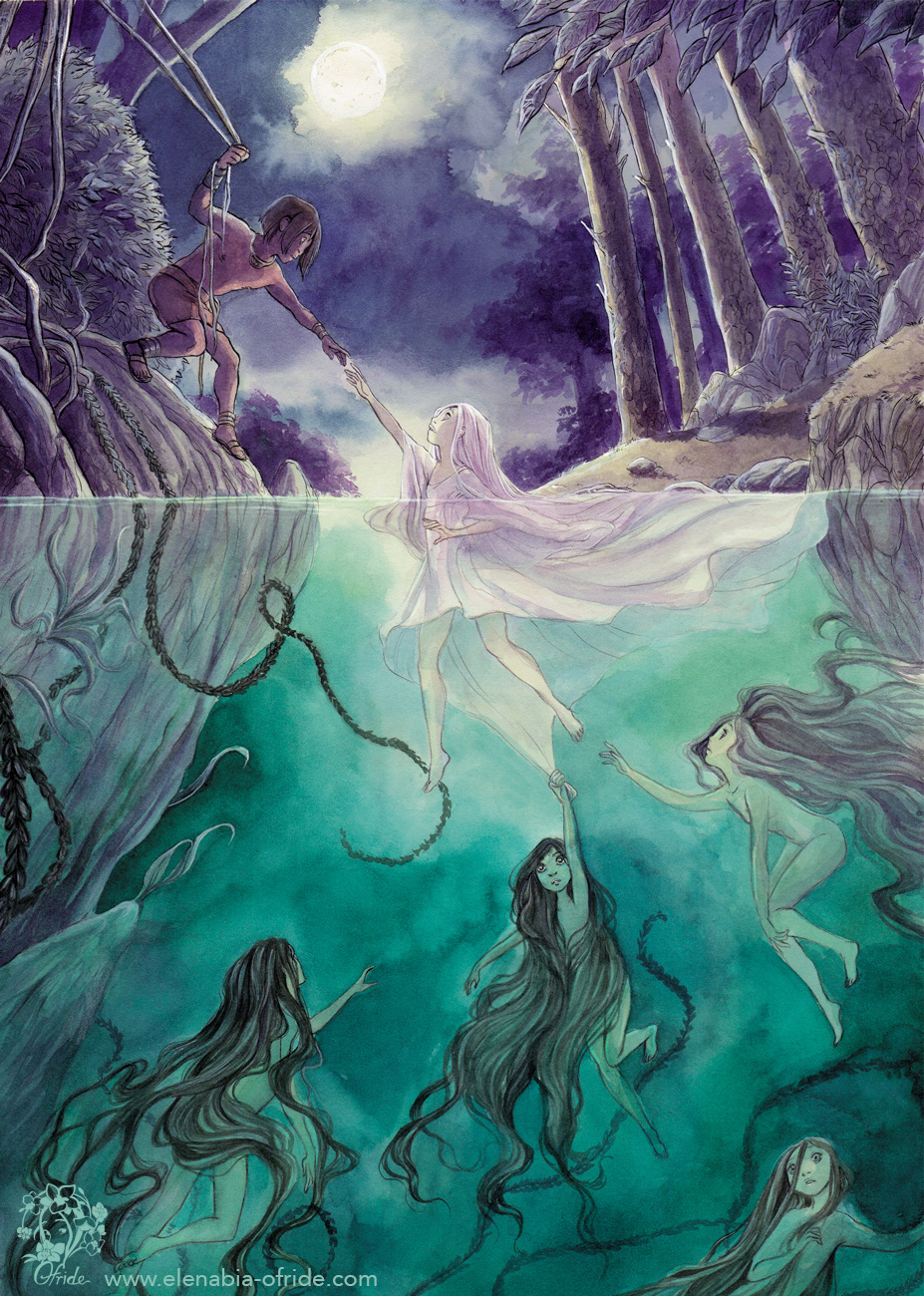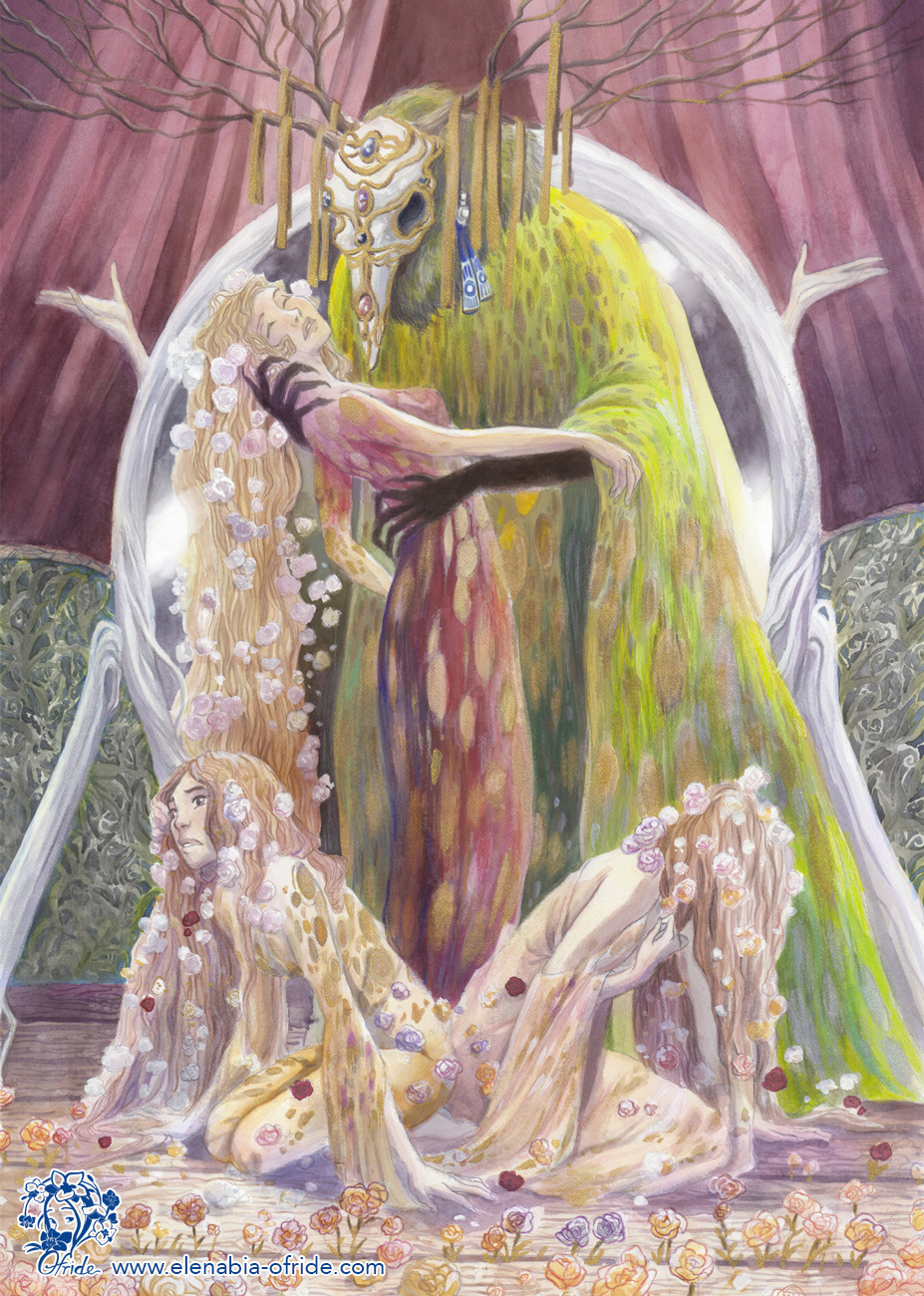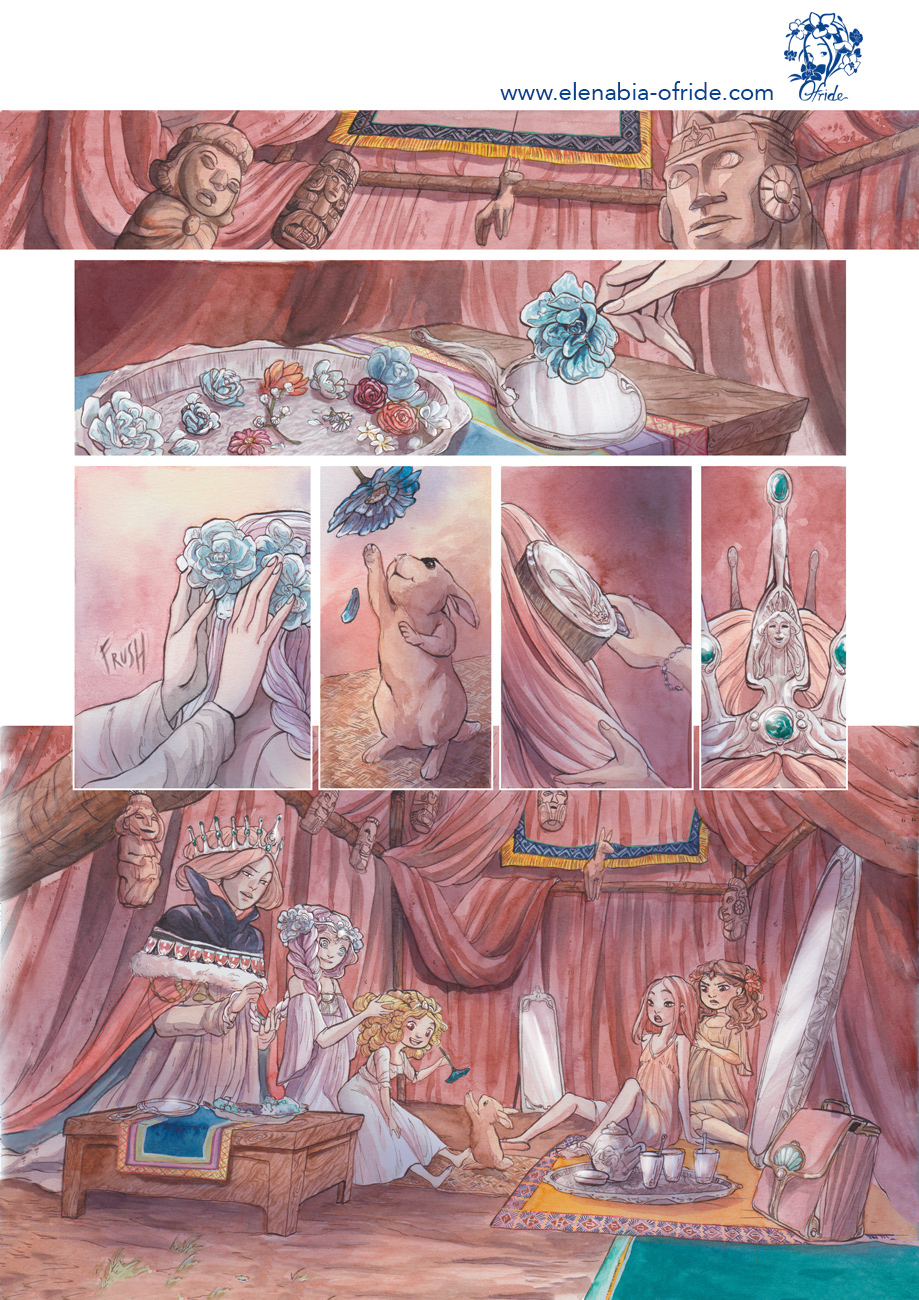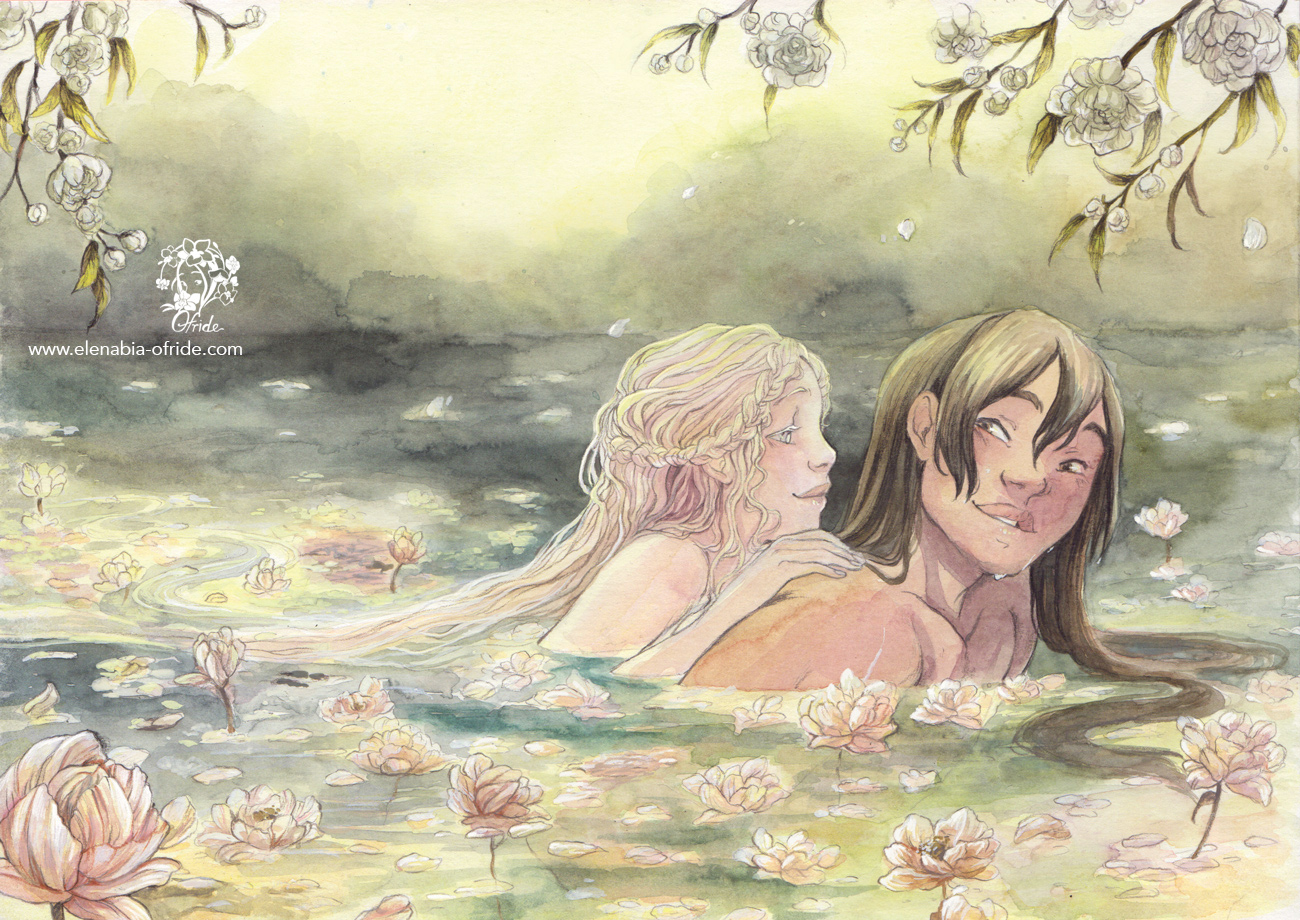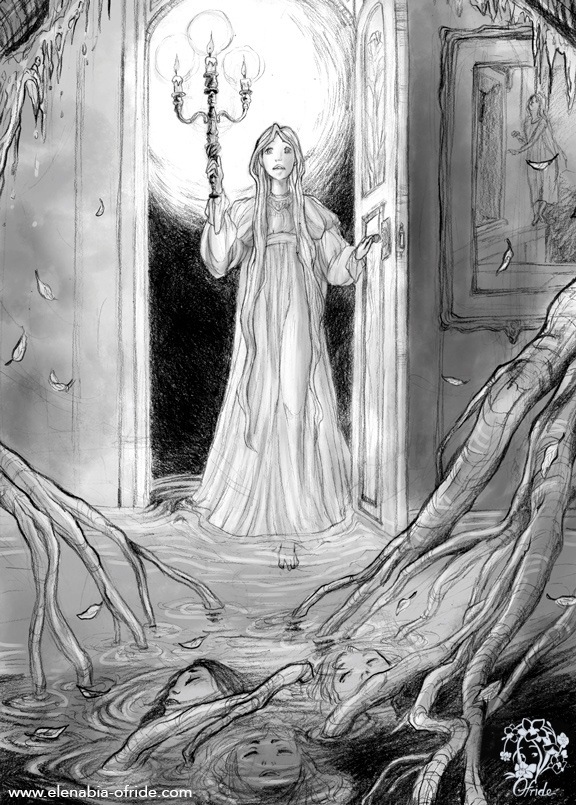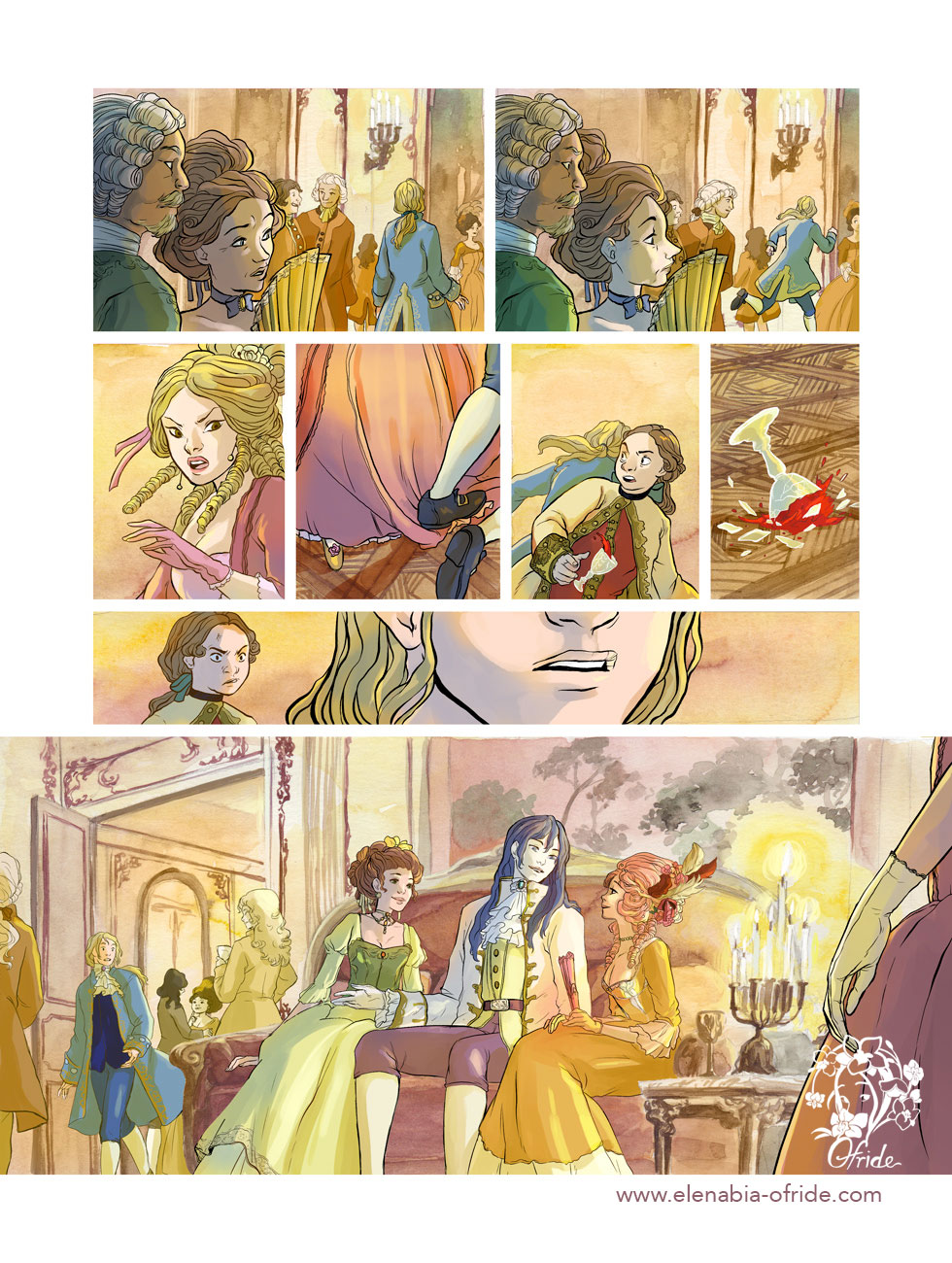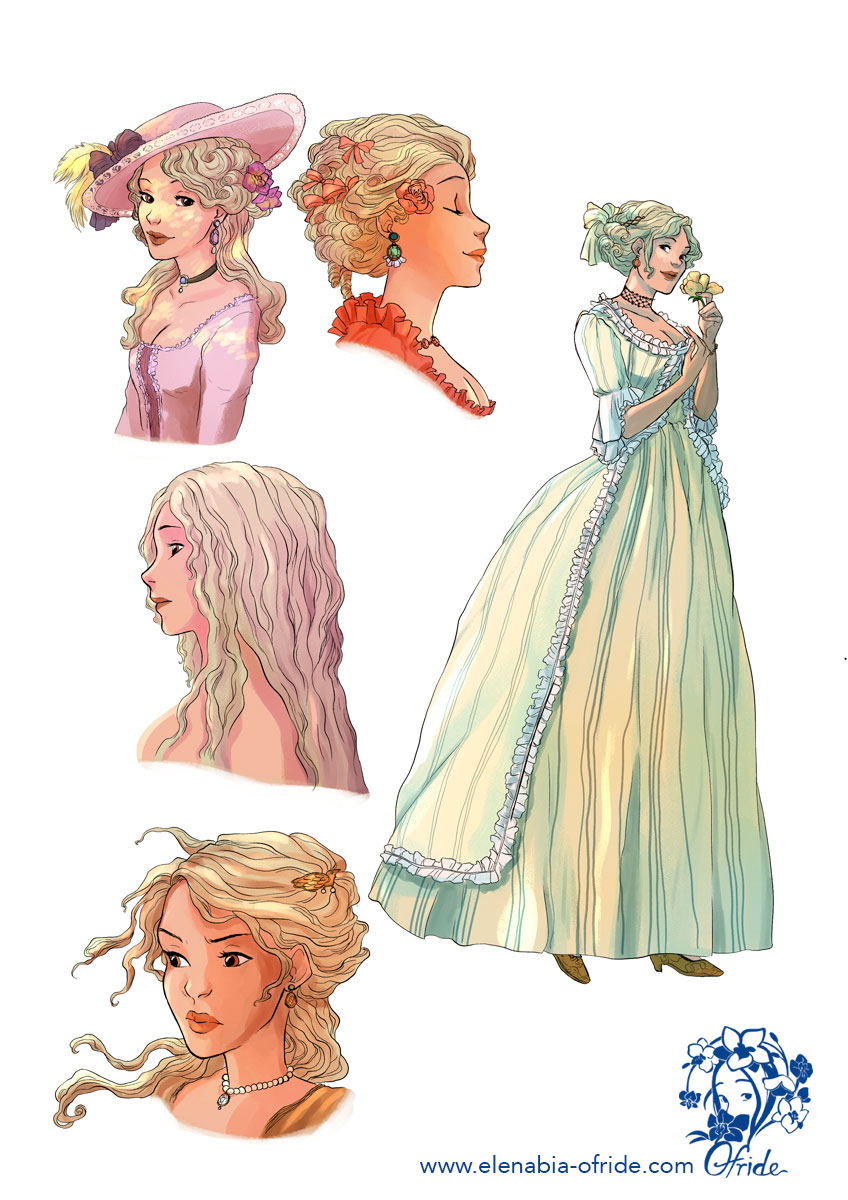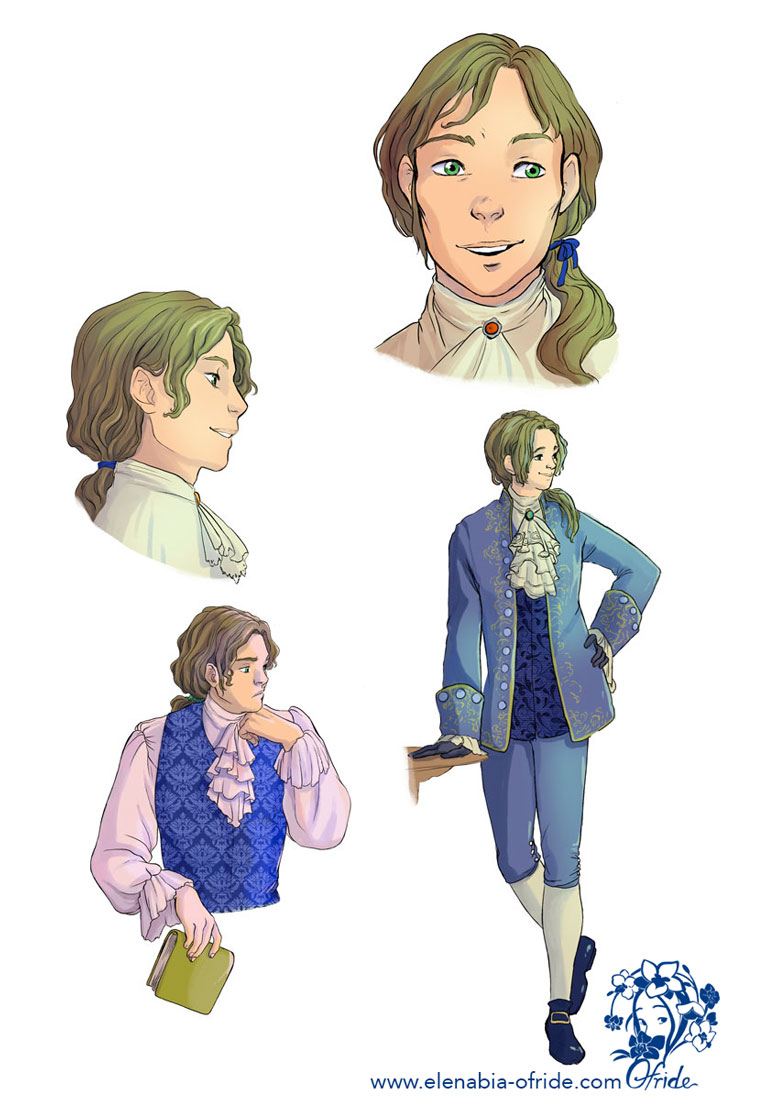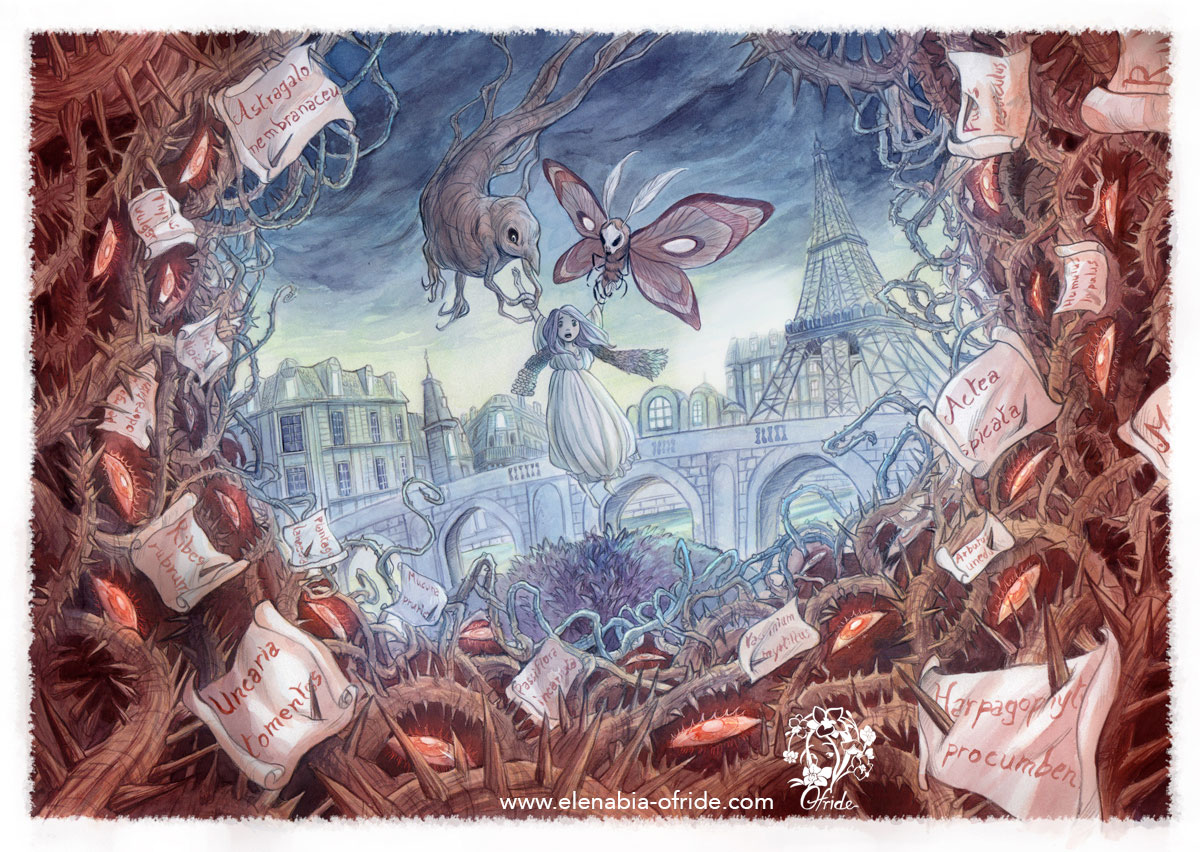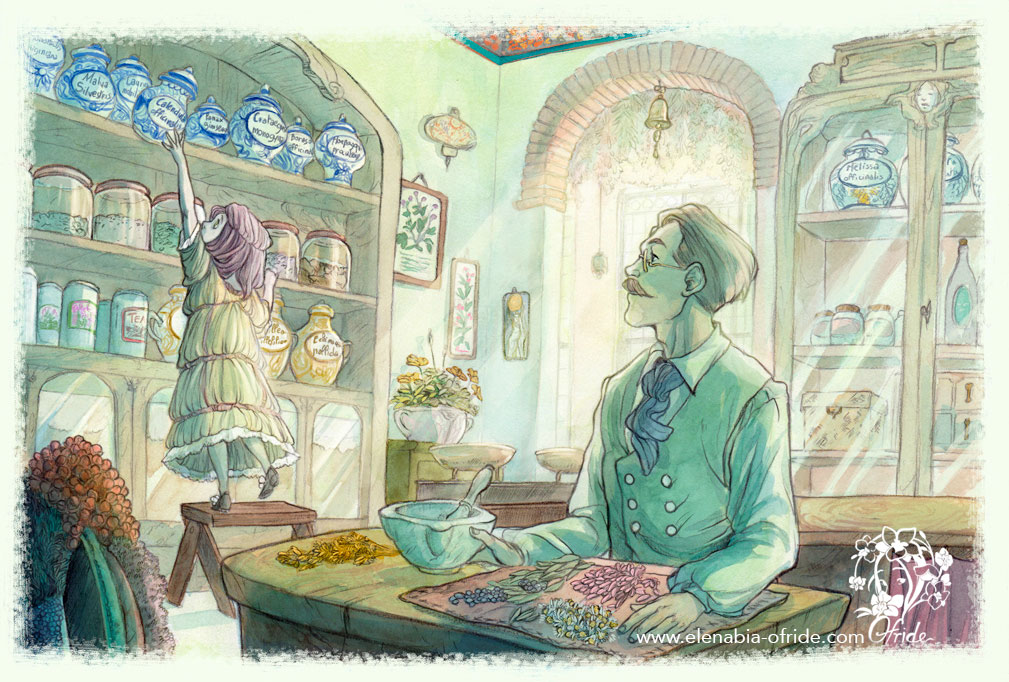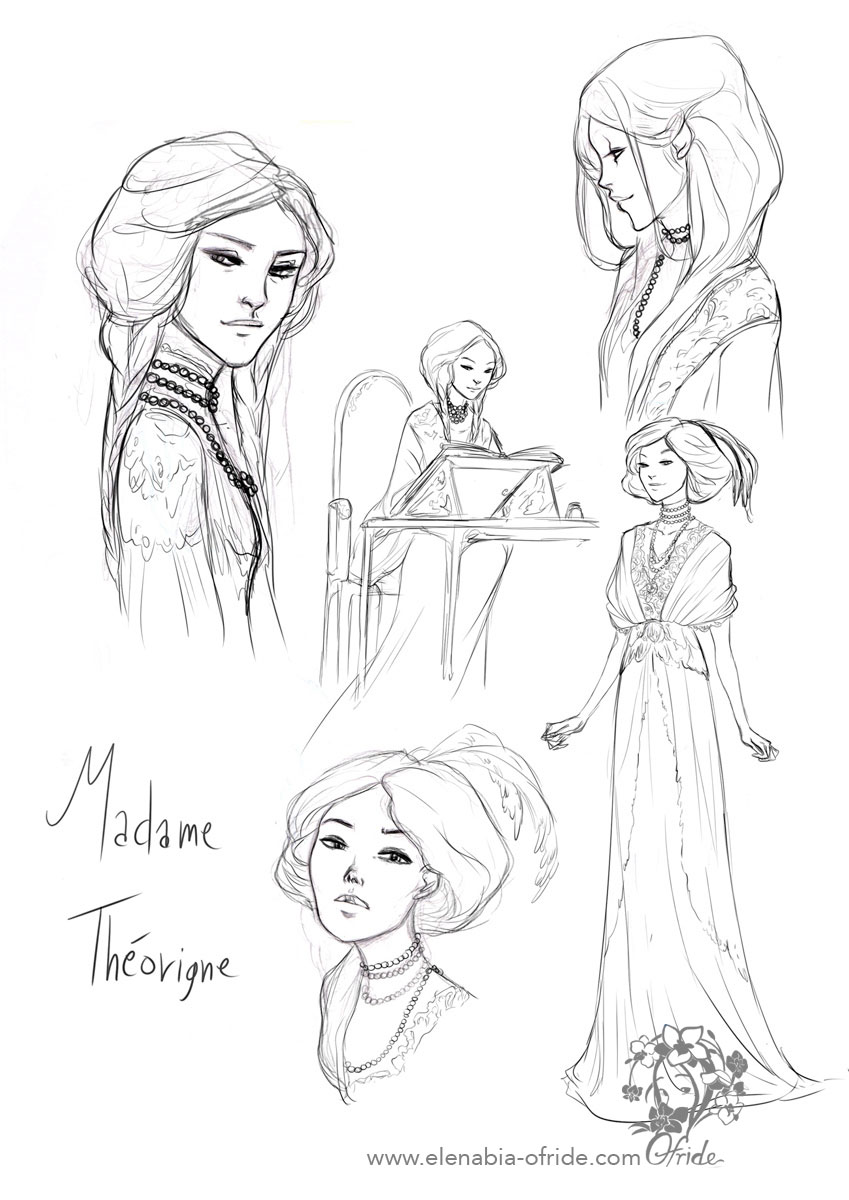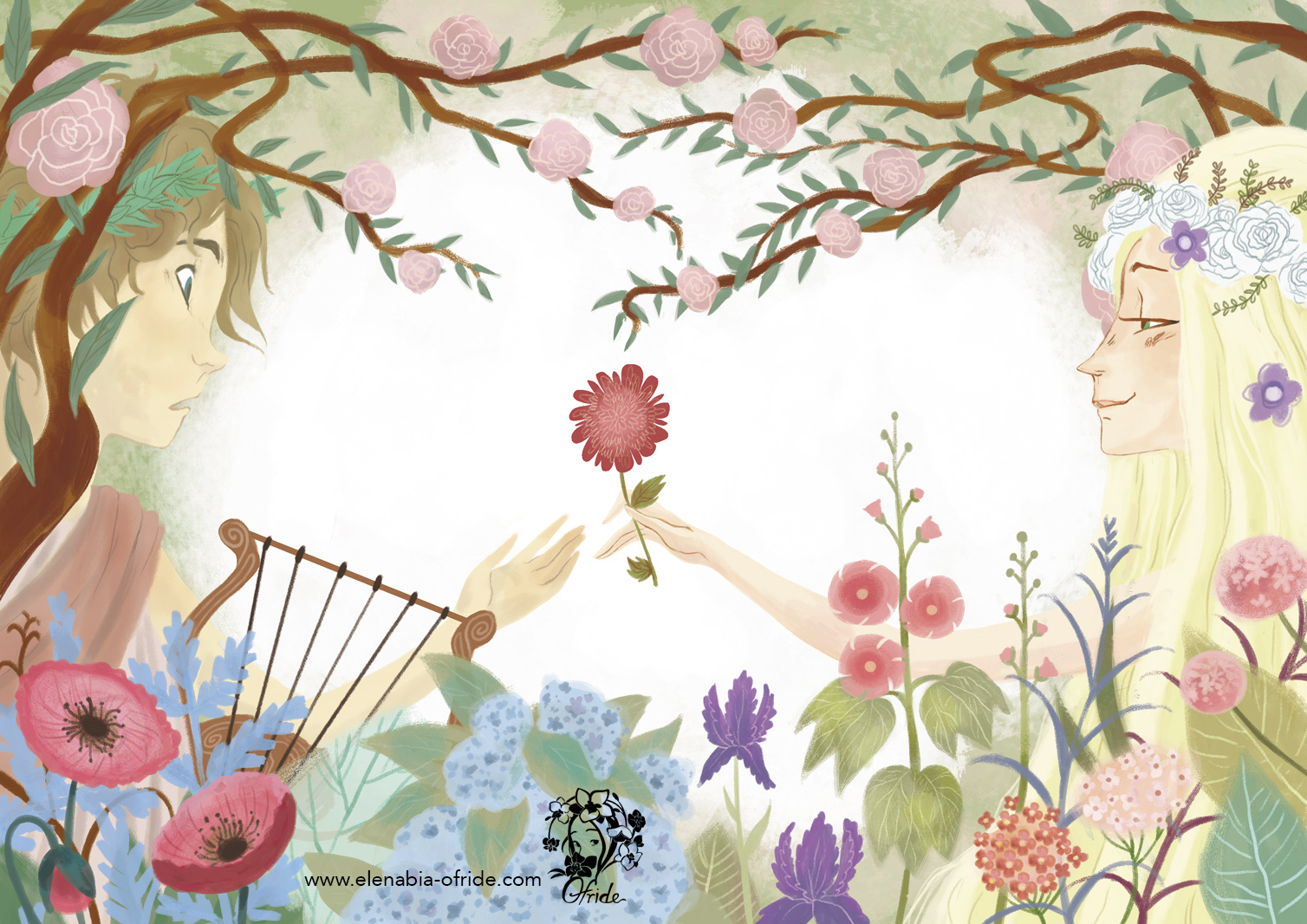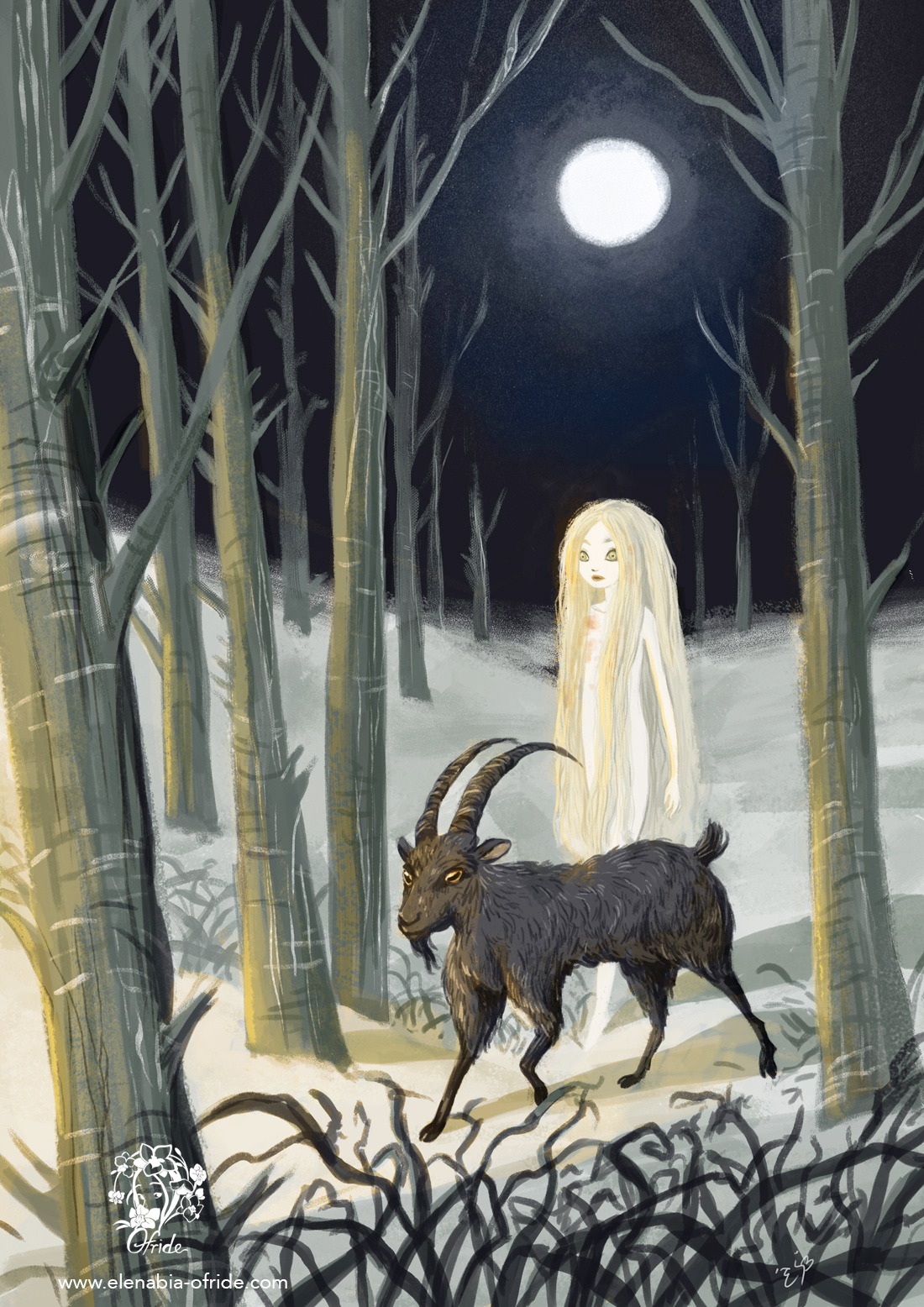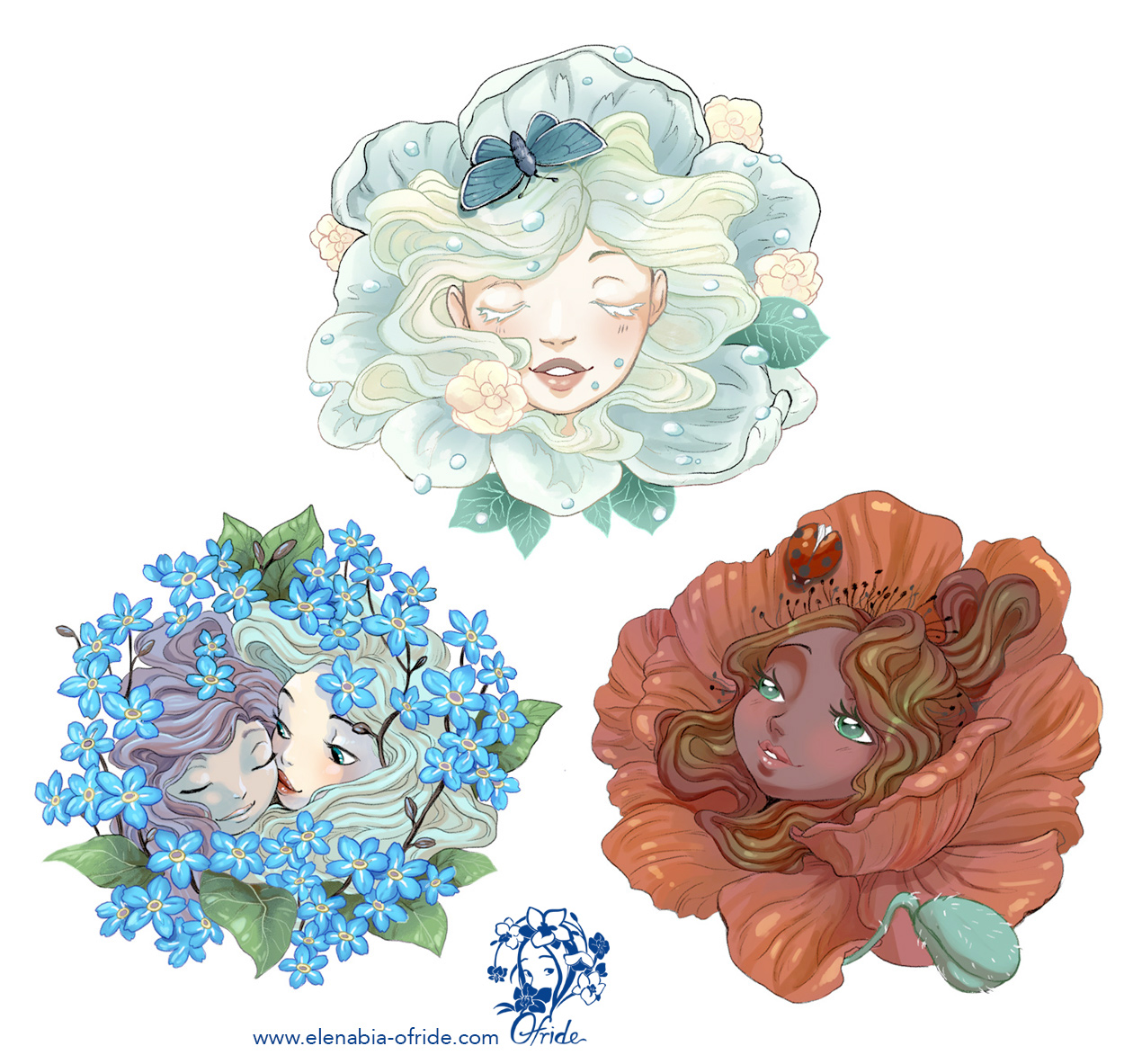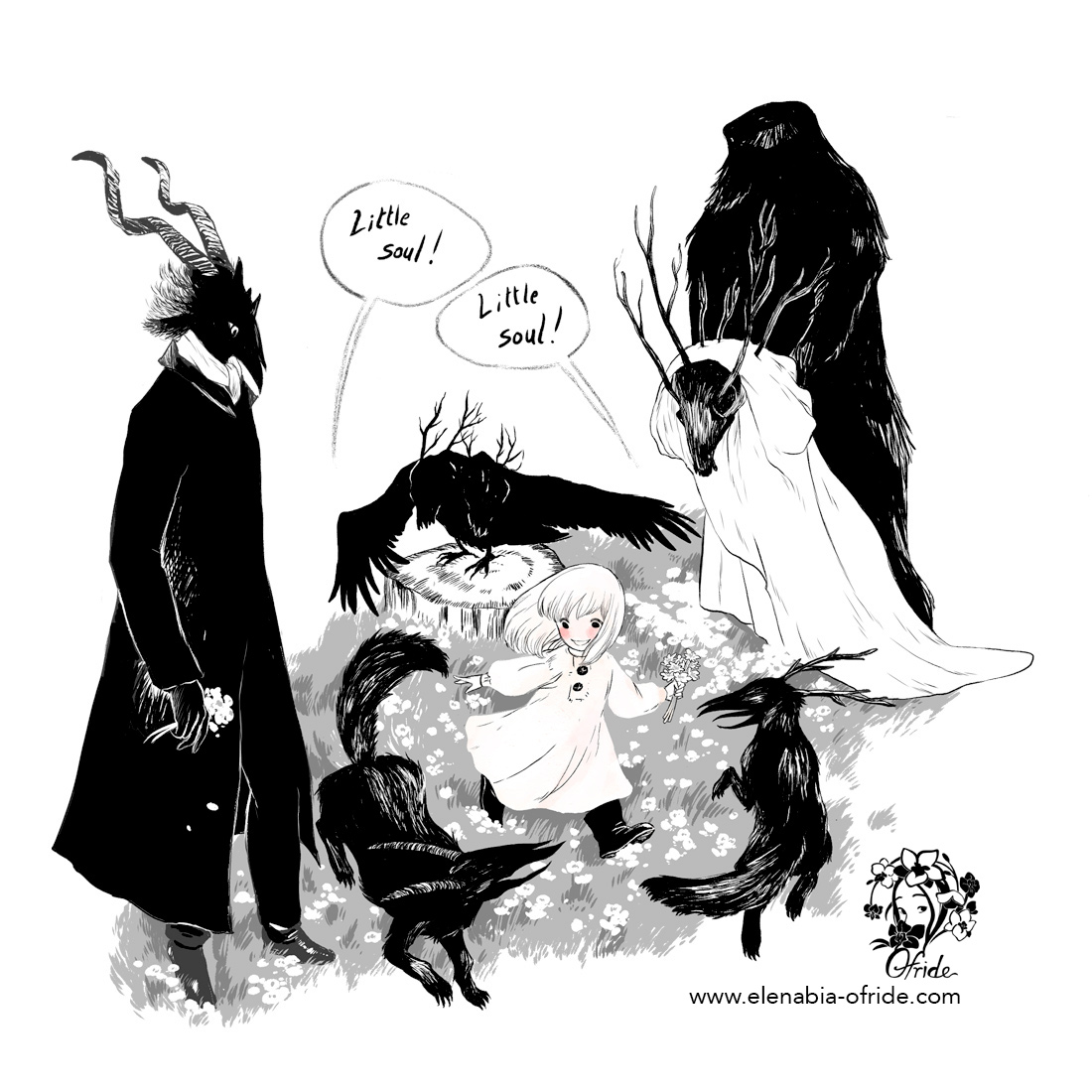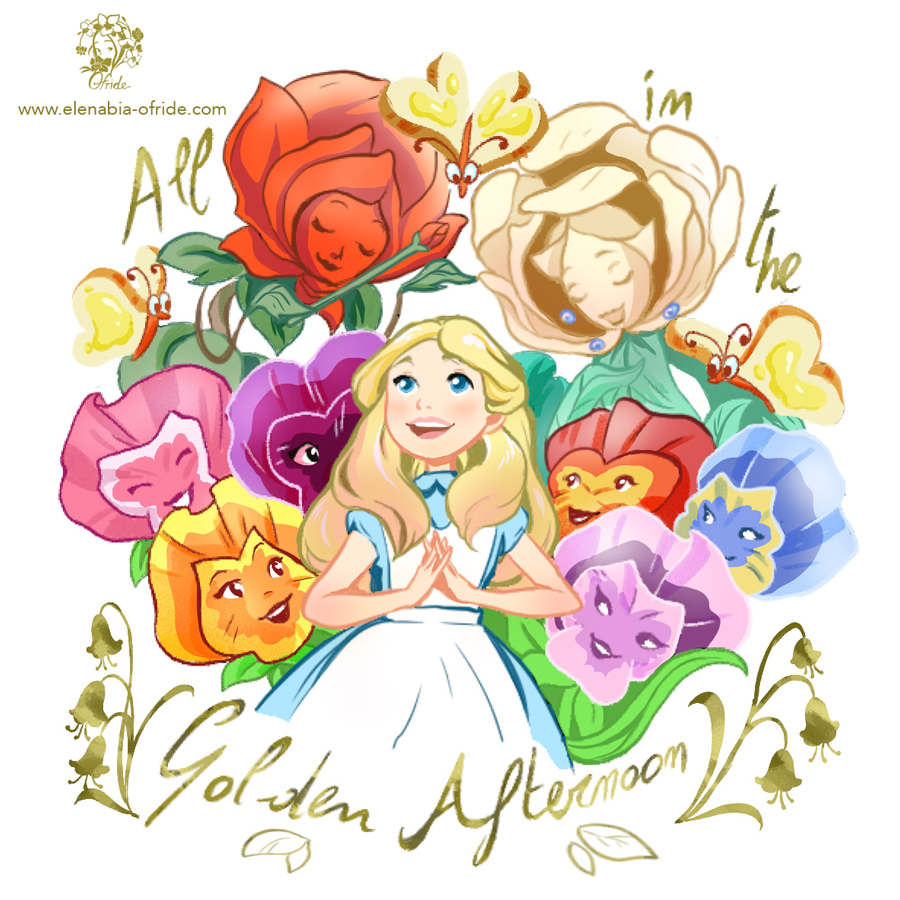Folktaleweek 2020
The popular art challenge that celebrates
folktales around the world.
The prompt list of this year:
1.Birth / 2.Ritual 3.Courtship / 4.Solstice / 5.Death / 6.Harvest / 7.Dance
I was inspired by some ancient tales and carnival masks belonging to the Italian folklore to create a little story for this challenge.
I wanted to improve more with digital painting and start to develop a different style for illustrations and projects.
Here’s the prompt of the week:
1:Birth
2:Ritual
3:Courtship
4:Solstice
5:Death
6:Harvest
7:Dance
“The night before the birth of her daughter, Francesca had a dream. As she walked through the woods, he heard the laughter of a newborn child ringing in the air. Following those laughter, the woman reached a huge rock covered with green moss that glistened in the rays of the sun. At the foot of the rock She found a little girl, wrapped in white flowers.”
An italian legend is inspired by this large rock hidden near Suno, in Piedmont.
In the local dialect this rock is called “Preja da Scalavé” . Women used to rub their bellies against the rock . This costum was considered a good omen for sterile and pregnant women.
“The baby girl born in a dream under the moss-covered rock grew up in the middle of the fields and pastures of the mountain. Her name was Sofia. One day, Marchesa, the oldest Masca in the area, decided to gift her powers precisely to her. The masca sent her two companions to bring the girl to her for the ancient ritual. So, Sofia became a masca. “
–
The” masche ” are typical characters of Italian folklore. They are women with supernatural powers, similar to witches, but with powers similar to shamanic tradition. They can turn into animals and plants. Once they get older, they must choose an heir to whom they can pass their powers. The succession ritual consists in the delivery of a book, the “Libèr del comànd”. The book contains all the spells of the previous masca. From the moment the heir touches the pages, the powers become her.
“One morning, Sofia opened the door of the house and found a bunch of viburnum attached to the handle. Along with the flowers there was a letter. Sofia turned her head, looking around, not noticing the presence of a masked creature hidden behind the outer wall of the house.”
In some mountain villages, on the Alps, it was a common customary on Valentine’s Day to stick a bunch of wild flowers on the door of your beloved’s house.
“The masked creature introduced himself to Sofia, informing her that the letter and the flowers were destined for Marchesa. One of the gods of his land, s’Urzu, had fallen in love with her and had decided to declare his feelings. Sophia, displeased, said that Marchesa gifted her powers over to her, and that she had decided to end her life, having taught her all about her magic.
Boes, the masked creature, was very worried, but still decided to inform his god about the fate of his beloved Masca. Thus, they both went to a sacred place, struck by the sunlight. The god, there, manifested itself in the form of a silhouette of light, shaped like a bull’s head. Boes and Sofia, desolate, informed s’Urzu of the fate of the Marchesa.
In the end, the divinity only speaks these words – if she has decided to leave this world, I will follow her too.-“
In Sardinia there are ancient megalithic edifices called nuraghi. On the day of the winter solstice, inside the nuraghe of Villanova Truschedu, the sun rays, entering through the window of the nuraghe, form a bull’s head on the wall of the nuraghe itself. The bull was probably considered a divinity by those peoples of the past.
“S’Urtzu was inflexible about his decision. He wanted to sacrifice himself to reach his beloved one. He called his servants, the Arestes, so that they could prepare the bonfire, with which the god would be burned alive. Sofia, feeling bad for S’Urtzu, asked Boes to take her to the place of the ritual, so that she could deliver the letter and the flowers to the god, joined together with a sprig of belladonna. The Marchesa, in fact, had changed her body into a belladonna plant before she died. Sofia murmured a spell on the flowering twigs and on the letter: they would be burned together with the god in the great sacrificial fire, but they would lead S’Urtzu’s soul back to the Marchesa.”
The Arestes and S’Urtzu are traditional Sardinian masks from the Sorgono carnival in Italy. During the traditional parade, the Arestes lead S’Urtzu to the sacrifice, prodding him with their spears. Then, S’Urtzu is burned in the fire and the Arestes dance around the bonfire to propitiate the new harvest. The figure of S’Urtzu, for someone, is attributable to the figure of Dionysus. After his death, he will reborn to give new life to the earth.
“Boes was grateful to Sofia for her spell. She returned to her mountains, happy, in the end, for the two lovers. Some time later, on the day of the harvest festival, Boes came to Sofia, intent on gathering herbs, declaring his affection for her.”
In various areas of Italy, in the days dedicated to the wheat harvest, there are various recurring rituals.
Small wheat dolls were made up to bless the harvest. On St John’s night, the women gathered a variety of herbs and flowers, including St. John’s wort, lavender, sage, verbena and mint.
“That night, the masche gathered under the ancient oak. They called the souls of their sisters and they dancing until the dawn. The ghosts of Marchesa and S’Urtzu hovered among the branches of the immense tree.”
In Capannori, in the province of Lucca, there is a large oak, called the Oak of the witches. Its huge branches develop horizontally and a legend tells that a group of witches used to meet together on the tree, to take their sabbath. The branches of the tree would have this shape due to the dancing of the witches.
villages, on the Alps, it was a common customary on Valentine’s Day to stick a bunch of wild flowers on the door of your beloved’s house.
LEWE Comic project
The survival journey of a little child throught a post-apocalyptic world.
A book of fairytale will guide the little girl in this desert and devastate scenery.
In the story of the book, the female warrior Skoon has to travel in order to find the Lewe, a
magical gem with great magical powers.
The child will find a seaweed, which shape is identical
to that of the magical gem in the book and she try to protect the plant until the end. Reality
and fairy tale are parallel, but what happens in the book story is magical, colorful and shining.
In reality, instead ,everything seems dark and tragic.
Nilihuè is a self-produced comic series with fantasy influences, which tells the story of Princess Argento and the nightmares that haunt her. Set in a fantasy world where a “fairy” realm and an indigenous tribe with a dark past coexist, Nilihuè is a story of adventure and romance with delicate colors and dreamlike narratives.
Comic books and artbook are avaible on my Etsy SHOP.
“Ai sun le Masche!” Not many years ago, the inhabitants of small villages in the Piedmontese Alps pronounced this phrase every time something strange ruin their life. Sofia and her parents will spend few weeks in the mountains and the little girl will learn about many legends concerning the mysterious “Masche”. But is there something true? Or are they just tales of fantasy and superstition? The story of this unique volume is strongly inspired by the legends known about the tradition of Piedmontese witches. At the end of the comic, you will find a small insight full of historical details on the Masche. The volume is printed in two colors, with purple and gold pantones.
This book is avaible on my Etsy SHOP.
